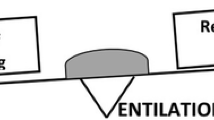Opinion statement
-
Patients with neuromuscular disorders involving respiratory muscles (upper airway muscles, respiratory accessory muscles, diaphragm, even abdominal muscles that stabilize the chest) have more significant problems with breathing during sleep, especially during REM sleep, than during wakefulness.
-
There are means of appropriately treating sleep disordered breathing and improving the quality of life of these patients. Treatment helps to avoid daytime symptoms and additional autonomic nervous system dysfunction. The treatment involves support of breathing during sleep. It must be adjusted to the severity of the problem during sleep, which implies systematic investigation and treatment based on polygraphic recordings during sleep.
-
Patients, even when stable, need to be monitored during sleep at least once a year and more often if symptomatic, ie, appearance of any daytime symptom or frequent upper respiratory infection or indication of daytime CO2 retention.
Similar content being viewed by others
References and Recommended Reading
Hansotia F, Frens D: Hypersomnia associated with alveolar hypoventilation in myotonic dystrophy. Neurology 1981, 31:1336–1337.
Park YD, Augusta GA, Radtke RA: Hypersomnolence in myotonic dystrophy (MD). Neurology 1992, 42(suppl):352.
Dematteis M, Pepin JL, Jeanmart M, et al.: Charcot Marie Tooth disease and sleep apnea syndrome: a family study. Lancet 2001, 357:267–272.
Iannaccone ST, Mills JK, Harris KM, et al.: Congenital myasthenic syndrome with sleep hypoventilation. Muscle Nerve 2000, 23:1129–1132.
Chokroverty S: Sleep-disordered breathing in neuromuscular disorders: condition in search of recognition. Muscle Nerve 2001, 24:451–455.
Guilleminault C: Sleep-related obstructive and nonobstructive apneas and neurologic disorders: Neurology 1992, 42(suppl):53–60.
Labanowski M, Schmidt-Nowara W Guilleminault C: Factors causing sleep disordered breathing, sleep and neuromuscular disease: frequency of sleepdisordered breathing in a neuromuscular disease clinic population. Neurology 1996, 47:1173–1180.
Koenig SM: Pulmonary complications of obesity. Am J Med Sci 2001, 321:249–279.
Barbe F, Quera-Salva MA, De Lattre J, et al.: Long-term effects of nasal intermittent positive pressure ventilation on pulmonary function and sleep architecture in patients with neuromuscular diseases. Chest 1996, 110:1179–1183.
Ellis ER, Bye PTB, Bruderer JW, Sullivan CE: Treatment of respiratory failure during sleep in patients with neuromuscular disease. Am Rev Resp Dis 1987, 135:148–152.
Leger P, Jennequin J, Gerard M, et al.: Home positive pressure ventilation via nasal mask for patients with neuromuscular weakness or restrictive lung or chest wall disease. Respir Care 1989, 34:73–79.
Leger P, Bedicam JM, Cornette A, et al.: Nasal intermittent positive pressure ventilation: long term follow up in patients with severe respiratory insufficiency. Chest 1994, 105:100–105.
Bassetti C, Aldrich MS: Sleep apnea in acute cerebrovascular disease: final report on 128 patients. Sleep 1999, 15:217–223.
Guilleminault C, Philip P, Robinson A: Sleep and neuromuscular disease: bilevel positive airway pressure by nasal mask as a treatment for sleep disordered breathing in patients with neuromuscular disease. J Neurol Neurosurg Psychiatr 1998, 65:225–232. A good review.
Restrick LJ, Fox NC, Braid G, et al.: Comparison of nasal pressure support with nasal intermittent positive pressure ventilation in patients with nocturnal hypoventilation. Eur Respir J 1993, 6:364–370.
Ferguson GT, Gilmartin M: CO2 rebreathing during BiPAP ventilatory assistance. Am J Respir Crit Care Med 1995, 151:1126–1135.
Li KK, Rilley RW, Guilleminault C: An unreported risk in the use of home nasal continuous positive airway pressure and home nasal ventilation in children: mid-face hypoplasia. Chest 2000, 117:916–918.
Chervin R, Guilleminault C: Diaphragmatic pacing for respiratory insufficiency. J Clin Neurophysiol 1997, 14:369–377.
van der Meche FG, Bogaard JM, van Sluys JC, et al.: Daytime sleep in myotonic dystrophy is not caused by sleep apnoea. J Neurol Neurosurg Psychiat 1994, 57:626–628.
Damian MS, Gerlach A, Schmidt F, et al.: Modafinil for excessive daytime sleepiness in myotonic dystrophy. Neurology 2001, 27:794–796. An important article.
Masa JF, Celli BR, Riesco JA, et al.: Noninvasive positive pressure ventilation and not oxygen may prevent overt ventilatory failure in patients with chest wall diseases. Chest 1997, 112:207–213.
Author information
Authors and Affiliations
Rights and permissions
About this article
Cite this article
Guilleminault, C., Shergill, R.P. Sleep-disordered breathing in neuromuscular disease. Curr Treat Options Neurol 4, 107–112 (2002). https://doi.org/10.1007/s11940-002-0018-0
Issue Date:
DOI: https://doi.org/10.1007/s11940-002-0018-0




